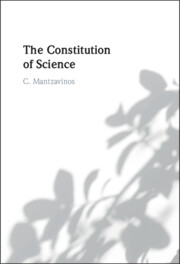Book contents
- The Constitution of Science
- Reviews
- The Constitution of Science
- Copyright page
- Epigraph
- Contents
- Acknowledgements
- Introduction
- 1 The Scaffolds Humans Erect on Science
- 2 Science and Values
- 3 Normativity
- 4 The Informal Institutions of Science
- 5 Core Scientific Activities
- 6 The Formal Institutions of Science
- 7 The Search for an Adequate Constitution
- 8 Five Principles for a Quasi-Autonomous Science
- Epilogue
- Excursus
- Notes
- References
- Index
5 - Core Scientific Activities
Explanation and Interpretation
Published online by Cambridge University Press: 05 December 2024
- The Constitution of Science
- Reviews
- The Constitution of Science
- Copyright page
- Epigraph
- Contents
- Acknowledgements
- Introduction
- 1 The Scaffolds Humans Erect on Science
- 2 Science and Values
- 3 Normativity
- 4 The Informal Institutions of Science
- 5 Core Scientific Activities
- 6 The Formal Institutions of Science
- 7 The Search for an Adequate Constitution
- 8 Five Principles for a Quasi-Autonomous Science
- Epilogue
- Excursus
- Notes
- References
- Index
Summary
Explanation and interpretation are two core theoretical scientific activities, and this chapter suggests a way of conceptualizing them and of normatively appraising them within the premises of a comparative approach. There are many distinct activities taking place in the scientific process, but explanation is widely considered as the core theoretical activity since it is an epistemic activity in which representation and inferential reasoning are merged in a complex way in order to enlighten natural, biological and social phenomena. However, there is another core theoretical activity directed towards other goals that is equally complex: interpretation. This is the activity that deals with meaningful material. The importance of interpretation is standardly stressed in the humanities, but there is no reason to assume that this epistemic activity should be normatively appraised according to different standards than explanation. It is indeed the claim of this chapter that there is no dichotomy of science and humanities at the methodological level and that the same normative approach can be successfully applied to both areas, notwithstanding a series of important differences.
Keywords
- Type
- Chapter
- Information
- The Constitution of Science , pp. 59 - 86Publisher: Cambridge University PressPrint publication year: 2024

